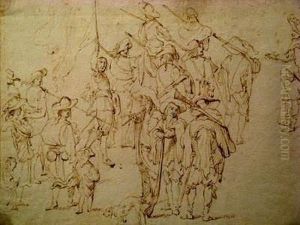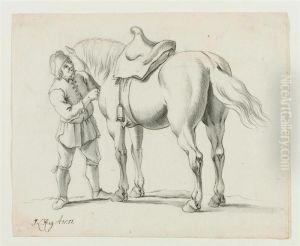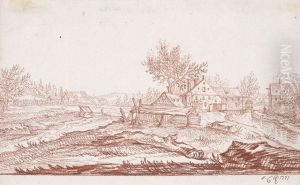Johann Georg Lorenz Rugendas Paintings
Johann Georg Lorenz Rugendas was a notable German painter and engraver born on March 8, 1775, in Augsburg, which was then part of the Holy Roman Empire. He came from a family with a strong artistic tradition; his ancestors were involved in the arts for several generations. His father, Johann Lorenz Rugendas II, was an esteemed painter, and it was under his tutelage that Johann Georg Lorenz began his artistic training.
Rugendas focused on battle scenes and military subjects, following in the footsteps of his family's tradition. His reputation grew for his ability to depict horses and the dynamic movement of battle scenes with accuracy and vigor. In 1799, he was awarded a prize by the Academy of Fine Arts Vienna for his work, which garnered him significant attention and furthered his career.
In 1800, Rugendas moved to Paris, which was a center for artistic development at the time. There he was influenced by the works of French artists and engravers, which had a lasting impact on his style and technique. He produced a considerable number of engravings during his career, many of which illustrated historical events and military engagements.
Despite his success as an engraver, Rugendas is perhaps best known for his participation in the Napoleonic Wars as a war artist. He joined the Bavarian army and documented various battles and campaigns, often at great personal risk. His firsthand experiences in the wars allowed him to create vivid and realistic portrayals of military life and combat, which were well-received by the public and critics alike.
Rugendas's work is characterized by its meticulous detail, dramatic compositions, and the ability to convey the chaos and intensity of battle. His engravings and paintings served not only as artistic expressions but also as historical records, capturing the events of his time with a journalist's eye for detail.
Johann Georg Lorenz Rugendas passed away on January 29, 1826, in Augsburg. His legacy lives on through his contributions to the genre of battle painting and his influence on later artists who sought to depict military subjects with authenticity and artistic skill. His works can be found in various art collections and museums, continuing to be studied and appreciated for their historical significance and artistic merit.


